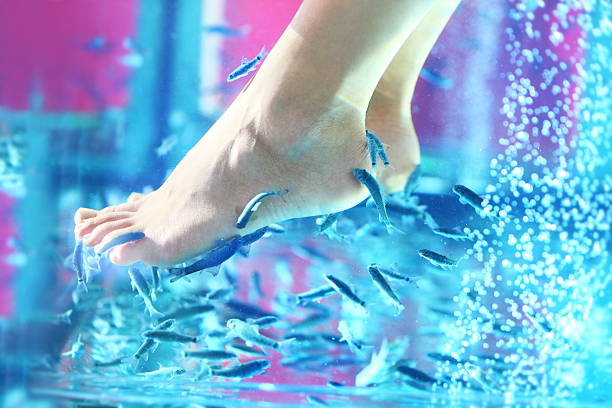Introduction:
We all love to pamper ourselves once in a while, especially when it comes to our feet. From traditional pedicures to more exotic treatments like fish pedicures, there are plenty of options available to us these days. However, one woman’s experience with a fish pedicure turned out to be a nightmare that lasted for months. She lost all her toenails, and it took years for them to grow back. In this blog post, we’ll explore the story in more detail and discuss the potential dangers of fish pedicures.
Fish pedicures have become increasingly popular in recent years.
The idea is simple – you put your feet into a tank filled with tiny fish called Garra rufa, and they nibble away at the dead skin on your feet, leaving them soft and smooth. However, there are a few things that people might not know about this trendy beauty treatment.
Firstly,
there is a risk of infection. The fish used in these pedicures are often not properly sterilized between clients, which can lead to the spread of bacteria and other microorganisms. This can result in skin infections, toenail fungus, and even more serious illnesses like hepatitis.
Secondly,
the nibbling action of the fish can cause injuries to the skin and nails. In the case of the woman who lost her toenails, the fish had bitten into the nail bed, causing the nails to loosen and eventually fall off. This is a painful process that can take months to heal, not to mention the unpleasantness of having bald toes.
Thirdly,
there are concerns about the welfare of the fish used in these pedicures. Garra rufa are not native to most countries where fish pedicures are popular, and as a result, they are often imported from other parts of the world. The conditions in which they are kept are often suboptimal, which can lead to stress and disease.
That being said,
there are some steps you can take to minimize the risks if you do decide to try a fish pedicure. Make sure the salon is licensed and follows strict hygiene protocols. Ask about the source of the fish and how they are cared for. And if you have any cuts or open wounds on your feet, avoid fish pedicures altogether.

Conclusion:
Fish pedicures may seem like a fun and unique way to pamper your feet, but they come with a host of potential risks and dangers. The story of the woman who lost her toenails is just one example of the harm that can be caused by this beauty treatment. Before you decide to book a fish pedicure, it’s essential to understand the risks involved and take steps to protect yourself. Remember, your health and safety always come first!